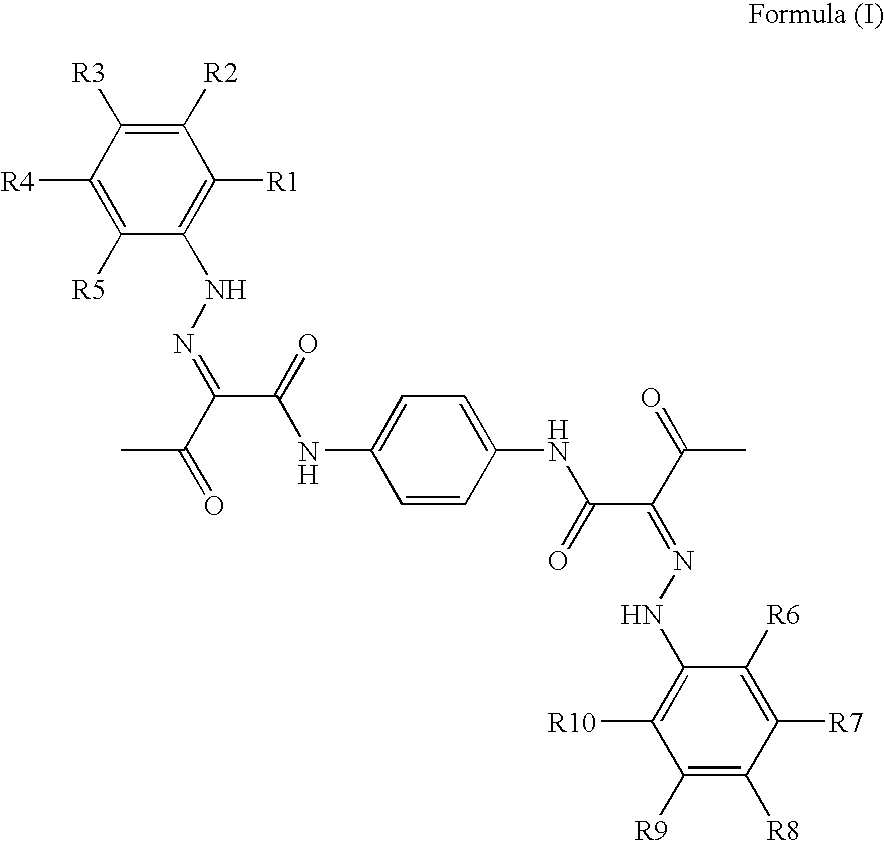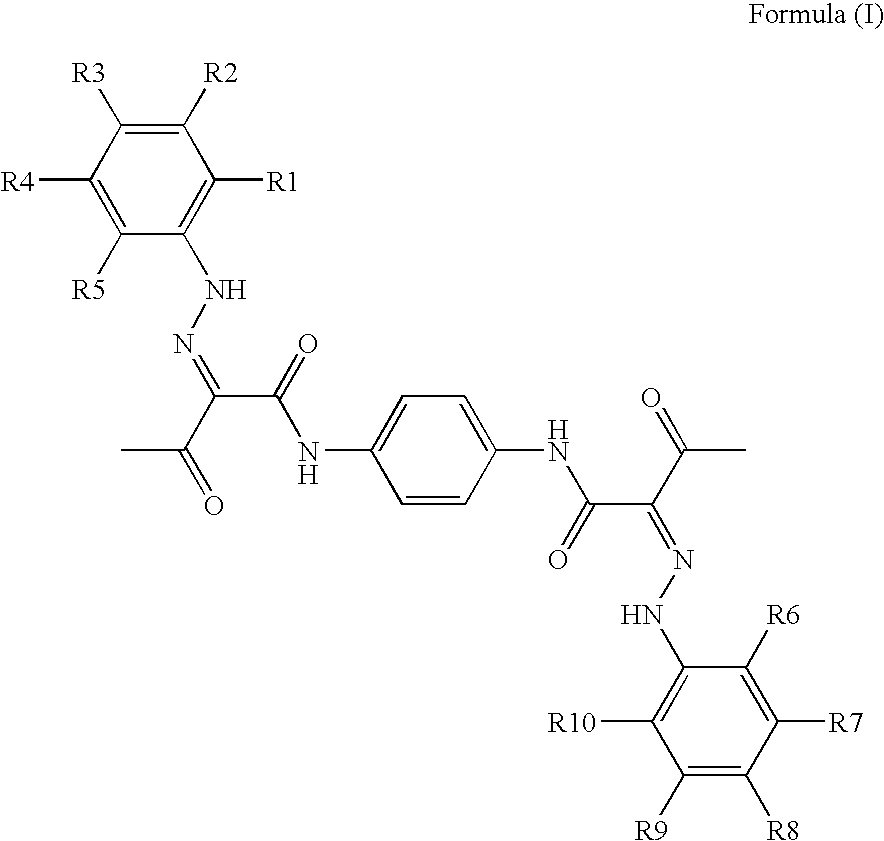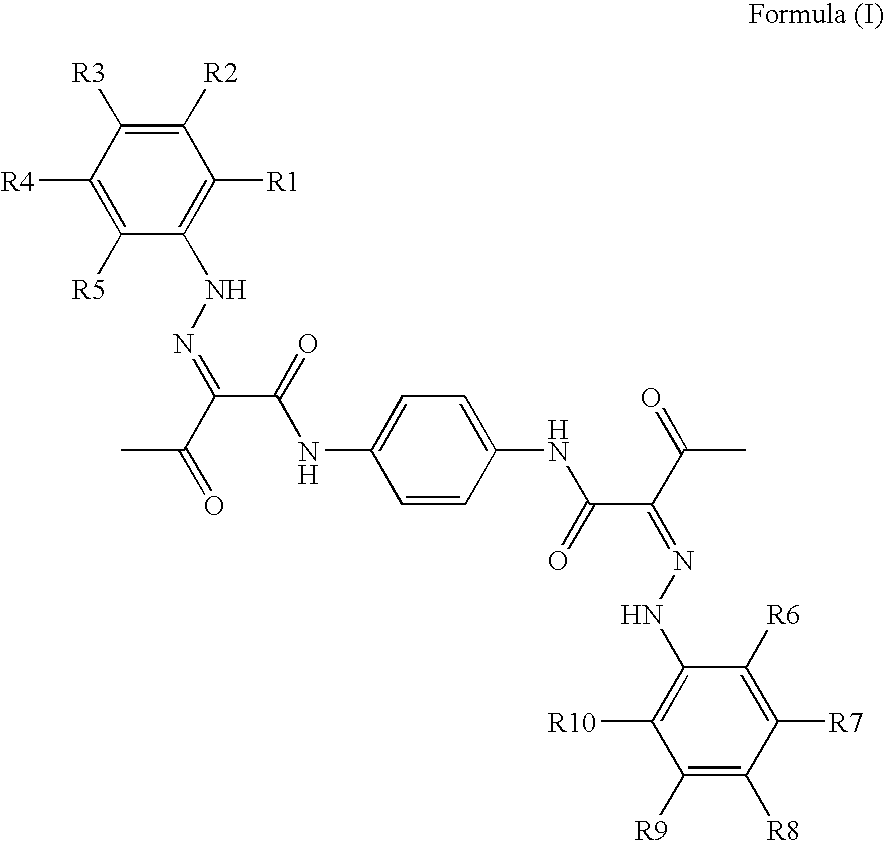Pigment dispersions with polymeric dispersants having pending chromophore groups
a polymer dispersant and pigment dispersant technology, applied in the field of stable pigment dispersions and pigmented inkjet inks, can solve the problems of polymer dispersants incurring financial penalties, dispersed pigment particles may have a tendency to re-agglomerate, poor dispersion stability, etc., and achieve the effect of increasing concentration
- Summary
- Abstract
- Description
- Claims
- Application Information
AI Technical Summary
Benefits of technology
Problems solved by technology
Method used
Image
Examples
example 1
[0163]This example illustrates that pigments in accordance with preferred embodiments of the present invention can be dispersed in inkjet inks using a polymeric dispersant having one or more pending chromophore groups that are smaller but similar in chemical structure to the pigment. The polymeric backbone of the dispersant was an alternating polymer, which is known to have poor dispersing capability.
Polymeric Dispersants DISP-1 to DISP-3
[0164]The alternating copolymer SMA 1000P was used as polymeric dispersant DISP-1 to prepare a comparative inkjet ink.
[0165]DISP-1 was then used for preparing styrene maleic acid copolymers modified by the chromophores MC-O and MC-P.
[0166]
TABLE 5MC-OMC-P
[0167]The synthesis is based on a kinetic study on the mono-esterification of styrene maleic anhydride copolymers disclosed by HU et al., Monoesterification of Styrene-Maleic Anhydride Copolymers with Alcohols in Ethylbenzene: Catalysis and Kinetics, Journal of Polymer Science: Part A, Polymer Chemis...
example 2
[0200]This example illustrates the method for preparing the polymeric dispersants through uncomplicated synthesis with monomers already containing a chromophore. Since pigments exhibit low solubility in many solvents, this complicates the synthesis of polymeric dispersants, which is not witnessed if a chromophore is used with smaller molecular weight but still exhibiting a resemblance with the pigment.
Chromophore MC-2
[0201]The formation of the chromophore MC-2 was accomplished by diazotation of compound MC-1D and subsequent coupling in the compound MC-2B.
Preparation of Chromophore MC-2
[0202]29.98 mL (0.36 mol) of concentrated hydrochloric acid was added to a suspension of 15.3 g (0.1 mol) of compound MC-1D in 300 mL water. This mixture was cooled to a temperature of about 0-5° C. and 8.97 g (0.13 mol) of sodiumnitrite was added. The diazonium-salt was kept at a temperature between 0° C. and 5° C. After 15 minutes the excess of nitrite was neutralized by adding 3.0 g (0.03 mol) of su...
PUM
| Property | Measurement | Unit |
|---|---|---|
| dispersity PD | aaaaa | aaaaa |
| dispersity PD | aaaaa | aaaaa |
| temperatures | aaaaa | aaaaa |
Abstract
Description
Claims
Application Information
 Login to View More
Login to View More - R&D
- Intellectual Property
- Life Sciences
- Materials
- Tech Scout
- Unparalleled Data Quality
- Higher Quality Content
- 60% Fewer Hallucinations
Browse by: Latest US Patents, China's latest patents, Technical Efficacy Thesaurus, Application Domain, Technology Topic, Popular Technical Reports.
© 2025 PatSnap. All rights reserved.Legal|Privacy policy|Modern Slavery Act Transparency Statement|Sitemap|About US| Contact US: help@patsnap.com



